Managing your ad campaigns can be incredibly tedious.
You probably don’t need me to tell you that though, because you’re looking at them every day.
You’re also making the same changes on a monthly, weekly, and even a daily basis.
And it’s not like you can just quit AdWords either.
Google has reported that businesses make an average of $2 in revenue for every $1 they spend on AdWords.
That makes it a vital part of your digital toolkit, and an even bigger part of your ROI.
The problem is that the work is never done. And it never will be either.
Luckily, you have options just below the surface of default settings in AdWords that can help lessen the amount of time you spend tinkering with your campaigns.
Adwords gives you the option to automate some of the more tedious elements of your campaign.
Because your only option shouldn’t be to hire the work out.
Many small businesses simply can’t afford to do that.
They also can’t afford to go take a marketing class to learn “secrets” they’ll never use.
The good news is that you can save time in the future by automating the processes you’re already doing manually.
I’m going to show you how to optimize your automated AdWords campaigns.
Automation is critical
Let’s start with the basics.
I already mentioned that the average AdWords spend doubles your revenue, but what else should you be looking for?
The trouble with traditional PPC campaigns is that the effective ones often require constant babysitting to see results.
And the repetitive process of adjusting, activating, or deactivating ads can take up too much of your time.
That’s why automation is so important.
It kicks in when the time is right, which means you don’t have to constantly monitor the ad to get the result you want.
So your biggest objective, quantitatively, is to create an ad with an amazing landing page that maximizes your click-through rate, or CTR.
Depending on your niche, a “good” CTR can be anywhere from 2 percent – 25 percent, or even higher.
More to the point, failing to optimize your ads means your competitors are edging you out.
In fact, Smart Insights found that being at the top of SERPs increases your CTR by 31.52%.
Which means if you can get a search results page that looks like this:
You’re not only cashing in on SEO; you’re doubling down with your ad campaign.
You stand a better chance of getting a higher CTR, which means more leads and more sales.
And this is where automated rules can save the day.
Automated rules are actions you can have AdWords perform automatically across your campaigns.
Running these rules requires you to set which conditions have to be met for the rule to trigger.
Keep in mind that automation is just a process that allows you to take the campaigns you’re already running and spend less time on them.
If you don’t have the right practices already in place, you’ll just be automating bad habits.
Lack of routine, not knowing what to look for, when to look for it, and why to look for it means you’re unable to fix problems when they arise.
You’re throwing your (or your client’s) money away.
And since you’re reading a blog article about PPC, it’s pretty obvious you want different results.
With these automations, you’ll have the ability to skip the routine tasks to focus on strategy and growth instead.
So let’s get started with the backend and move down to individual ads.
1. Optimize your campaign first
One of the fundamental concepts of PPC is setting the right overarching parameters for your ads.
Missing the mark on a technical detail can sink your campaign before it even starts, leaving you with the assumption that tasks are automated when nothing is happening.
For example, the effectiveness of segmentation and targeting of your ad are directly tied to basic elements like copy and coloring.
That doesn’t even touch on the landing page you use.
All this means your automation starts well before you ever log into your AdWords accounts.
You have to begin by knowing your targets and the results you want, and then constructing compelling copy, images, and link your ad to a useful landing page.
So let’s walk through what this looks.
Let’s say we want to run a display campaign via AdWords.
You’ll fire up your dashboard, go to your campaign, and be met with a page that looks like this:
As you can see, I’ve highlighted the options to select.
This will run a display campaign with the goal of acquiring leads.
You also want to make sure you select a standard display campaign so that you can choose your settings and targeting.
You’ll also need to input your website URL.
Then input your campaign name and targeting information.
For this example, I’ll call it Business Owners and target Seattle, WA.
Next, you’ll need to decide on bidding.
What you choose for this depends on your objective, but since we’re talking about automation, I’m going to opt for the “Automatically maximize clicks” option.
This will automatically set your ad to bid for the lowest possible cost-per-click (CPC).
If you choose to select a different bid strategy, here are your options:
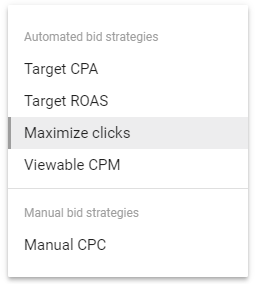
As you can see, there are four automated options or a manual bid setting. Leave that be for now.
You’ve successfully set up automation for your campaign now. Next on the list is your ad groups.
2. Now get the ad groups right
At this point, you’re ready to set the targeting parameters for your ad.
Koozai recommends breaking down and targeting your ads to these general categories before you start to make changes in AdWords:
- Location
- Device
- Income
- Interest Categories
- Gender
- Age
Once you’ve determined where to target your ads, it’s time to set them up.
Start with audiences, which provides a breakdown of online actions and interests. You can see here I’m keeping with the business owner theme.
Next, move on to demographics.
For this particular ad group, let’s say I want to target male and female business owners who are between the ages of 20 and 35.
They’ll be in the top 30% of household income with no children.
Now select your keywords, topical targeting, and the last big piece: automated targeting.
Automated targeting a great tool for letting Google AdWords display your ad to customers similar to the ones you’ve targeted.
You can either opt out of automated targeting, which limits your audience to only the parameters you’ve selected.
Or, you can choose between conservative and aggressive automation strategies.
Conservative automation will keep your audience very narrow, but will still put your add in front of similar demographics.
This a great option for businesses that want more conversions and are okay with getting clicks that are a bit outside their optimal audience.
Aggressive automation widens your audience even more and places your ad in front of a wider but still similar group of people.
Use this setting when you want way more conversions and are okay picking through some potentially low-quality leads.
But if you’d rather keep the ad group tight, then select no automated targeting.
Whichever one you pick is determined by your goals and how prepared your sales team is to handle less-than-ideal leads.
3. Set individual ad performance parameters
Now that you’ve set up your campaign and ad group, it’s time to dive into some individual automation elements.
Keep exposure equal
Google’s default setting is to prefer your best performing ads.
While this might sound like a good thing, it can skew your A/B testing results and will favor one ad over others.
To combat this, you want to ensure that your ads are set to “rotate indefinitely” so that each has an equal chance to perform.
This makes sure that one ad doesn’t get shown more often than others, which could skew your conversion rates.
Normally, you’d be forced to go into your AdWords dashboard and manually stop an over-shown ad, and that will affect the results of your A/B testing.
You’ll find this option under your settings tab in the individual ad group. It will look like this:
Once you’ve selected and saved the settings to rotate indefinitely, you won’t be saddled with the repetitive task of deactivating overperformers to get the results you want.
Pick the right device
There are so many devices to choose from these days it can make your head spin. Contrary to what you might think, advertising universally across all devices isn’t always a good idea.
I worked with a client once who was advertising on mobile, desktop, and tablets at first.
After a month, we sat down and parsed through the data. Tablets only had three clicks.
Compared to the 244 clicks from desktop, it was clear that tablets were a waste of time.
But don’t just take that advice and run with it.
It’s also worth considering that 33% of all Google search clicks are generated through mobile.
So just because one company isn’t met with success on a mobile platform doesn’t mean you’ll have the same results.
The same is true for the opposite sentiment as well.
Which means if you’re opting out of advertising on mobile, you should probably reconsider.
One former Google employee who’s now working as an SEO specialist recommends deciding whether you want to be viewed in apps or not.
You may be spending money advertising to kids who use mobile apps but wouldn’t ever touch your product.

The only way you’ll know for certain is if you try, but if your age demographic isn’t on the lower end of the spectrum, then an in-app ad might not suit you.
Pause or play?
Another automation miracle at the ad group level revolves around timing.
Wordstream recommends doing some hardcore data analysis before you get to the business of setting up times though.
For example, they found that they weren’t getting many clicks on the weekend, but the CTR was higher, and the cost per click was lower:
They used this information to take action accordingly.
Namely, optimizing ad budget and the timing allotment so that these ads could perform even better.
Don’t just rely on the default settings.
They’ll have your ads running 24/7, and you’ll burn through your budget.
The more specific you are, the better your results will be.
You can see here that I’ve set an example ad for certain times on Monday and Tuesday only:
And consider the types of ads you’re running.
You don’t need a Thanksgiving-themed advertisement to be running in the middle of summer.
Or a late-night all-nighter themed ad in the middle of the afternoon.
That’s just a waste of money and will spread confusion around your brand.
Time your ads appropriately.
Make sure you’re set to track
Analytics is everything in PPC.
Every action you take is based on data. Whether it’s increasing a bid or narrowing your audience, you want to know the analytics that back up your decision making.
Which means you need to make sure you’re actually connected to your tracking system before you miss out on valuable insight.
Make sure AdWords is connected to your Analytics.
Failing to do so would result in being unable to gather any reliable and usable feedback on your ads.
source https://blog.kissmetrics.com/adwords-optimization-rules/
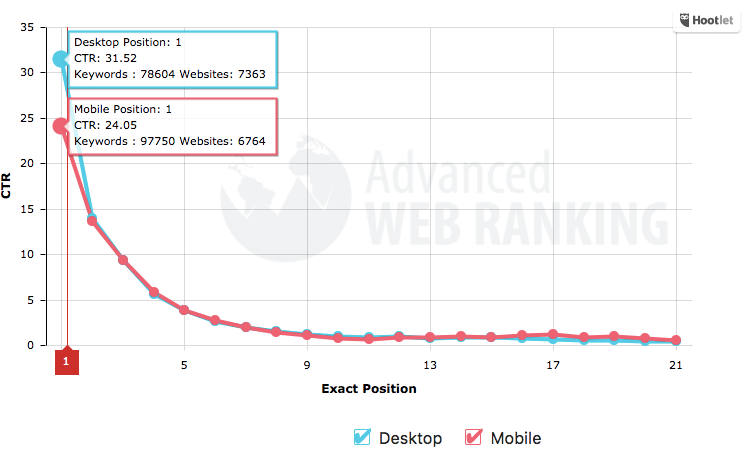
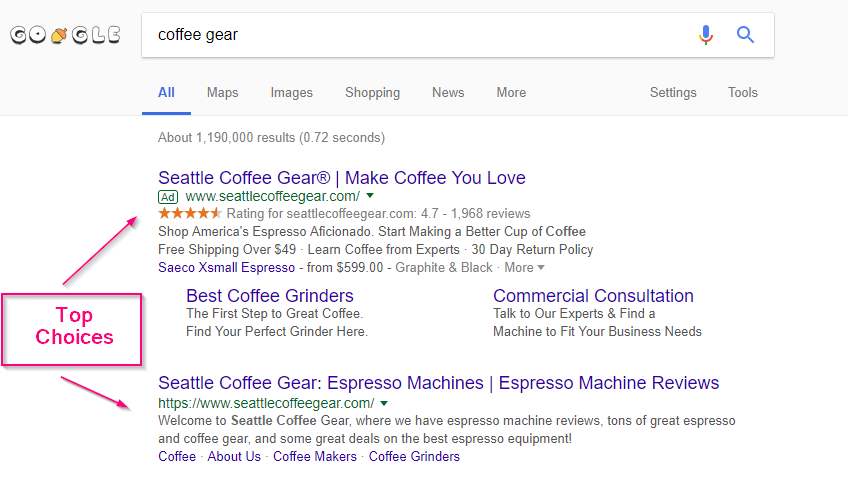

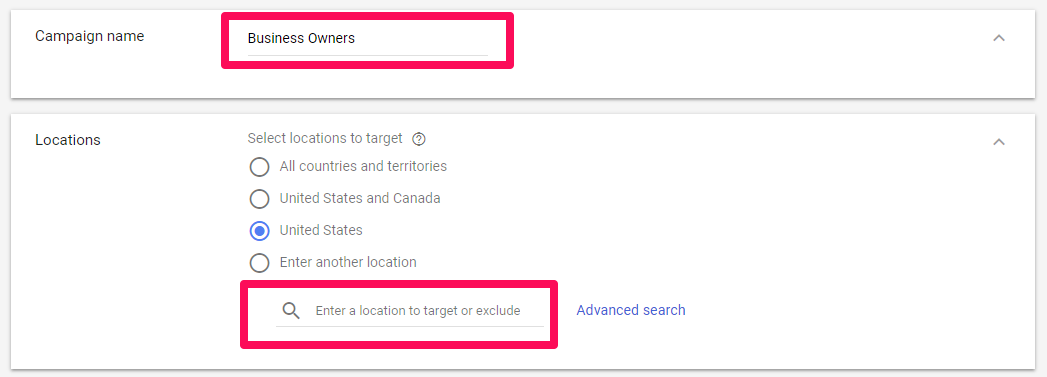
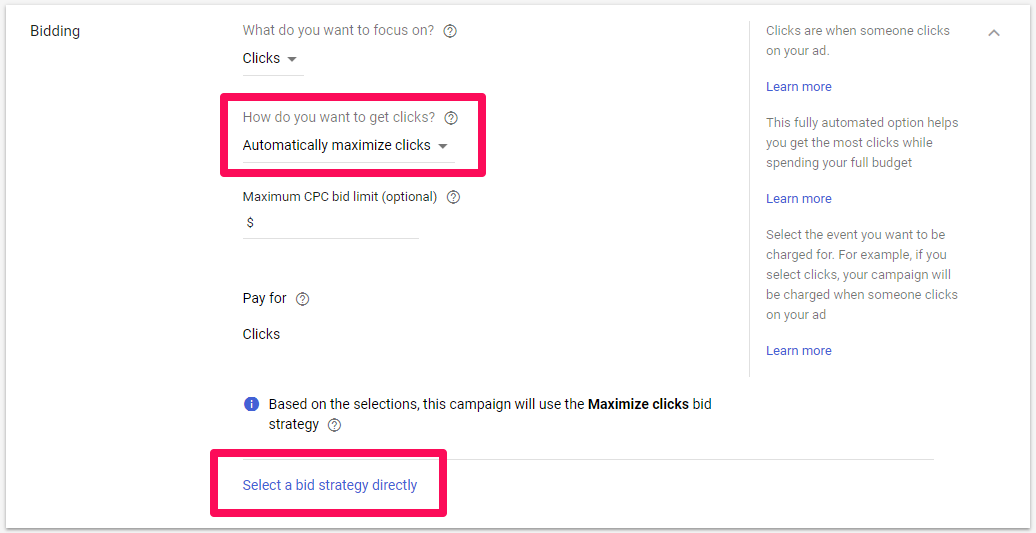




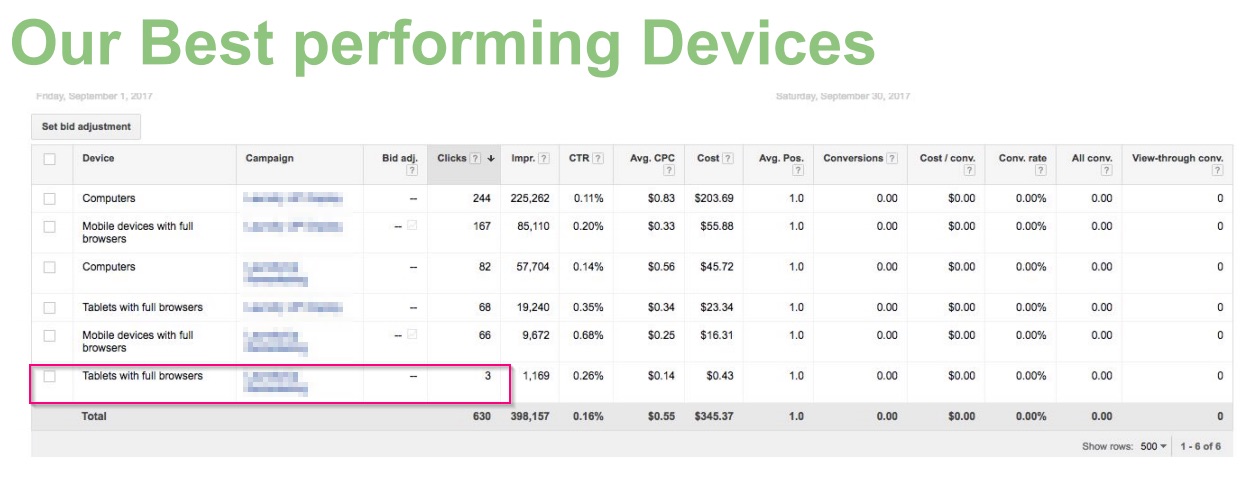
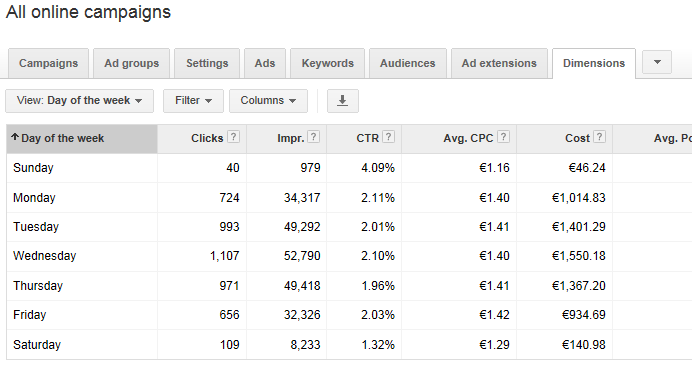

No comments:
Post a Comment